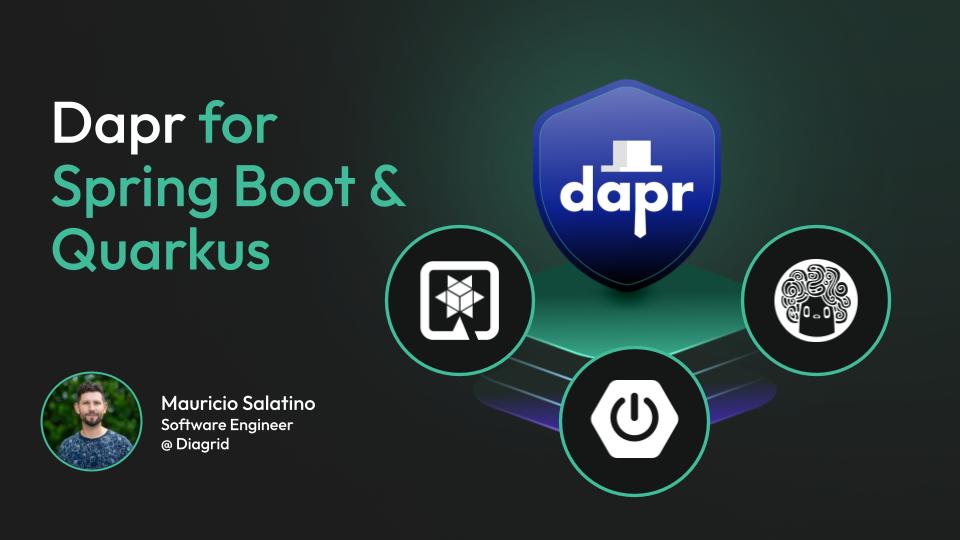Understanding Dapr Actors: From Theory to Practice
In an engaging presentation at Dapr Day 2024, Elena Kolevska from the Diagrid open source team breaks down the complex world of actor systems. Having recently worked on Dapr's actor subsystem, Elena shares her insights to help developers appreciate and implement this powerful pattern.
From Abstract to Concrete [00:39]
Elena starts with a refreshingly approachable definition: "An actor is a primitive in the domain of concurrent computation." She makes the concept relatable by comparing actors to everyday entities - from pets to Wi-Fi routers - highlighting their core properties:
- Defined behavior
- Maintained state
- Communication abilities
Bridging OOP and Actor Model [01:19]
Drawing familiar parallels, Elena maps:
- Classes → Actor Types
- Objects → Actor IDsThe key distinction? "While the scope of an object is a single process, the scope of an actor would be the entire distributed system."
A Tale of Two Pioneers [03:15]
Elena shares an intriguing historical connection between:
- Alan Kay (object-oriented programming pioneer)
- Carl Hewitt (actor model creator)Both influenced by message-passing models, their work intertwined in the 1970s, though the exact nature of their influence on each other remains debated.
Core Actor Properties [04:29]
Elena outlines crucial characteristics:
- Stateful objects with defined behavior
- Single-message processing with isolation
- Message-based communication
- Traditional explicit lifecycle management
The Virtual Actor Revolution [05:37]
The game-changer comes with virtual actors:
- Automatic loading/unloading
- On-demand instantiation
- External state storage
- Improved resource efficiency
- Enhanced scalability
Real-World Success: Halo 4 [10:01]
Elena shares a compelling case study: Halo 4 became one of the first major implementations of the virtual actor model, successfully handling millions of daily users.
Dapr's Implementation [10:40]
Dapr embraces the virtual actor model with:
- Identity through actor type and ID
- User-defined methods
- Single-threaded processing
- External state storage
- Automatic distribution
- Built-in reminders and timers
Why This Matters
Elena's presentation illuminates why actors are crucial for modern distributed systems:
- Resource efficiency
- Automatic scaling
- State management
- Concurrency control
- Developer productivity
The evolution from traditional actors to virtual actors, and now to Dapr's implementation, shows how the model has matured to meet real-world distributed computing challenges.
Want to start using actors in your Dapr applications? Elena's clear explanation provides the perfect foundation for understanding this powerful pattern. Check out Dapr's documentation for implementation details.




.jpg)